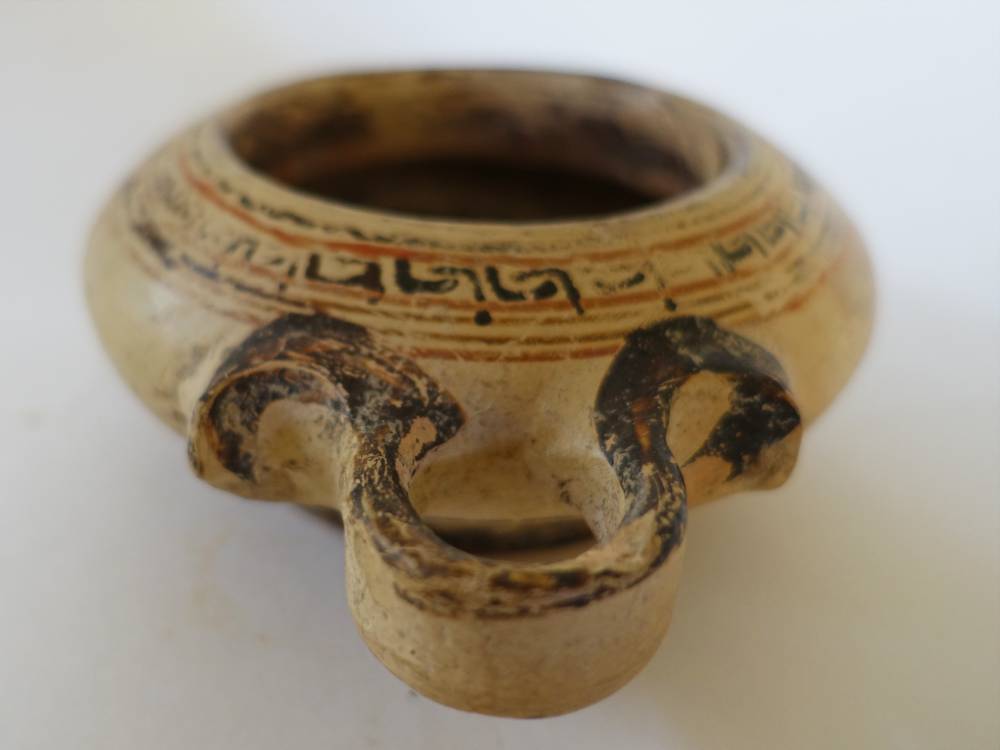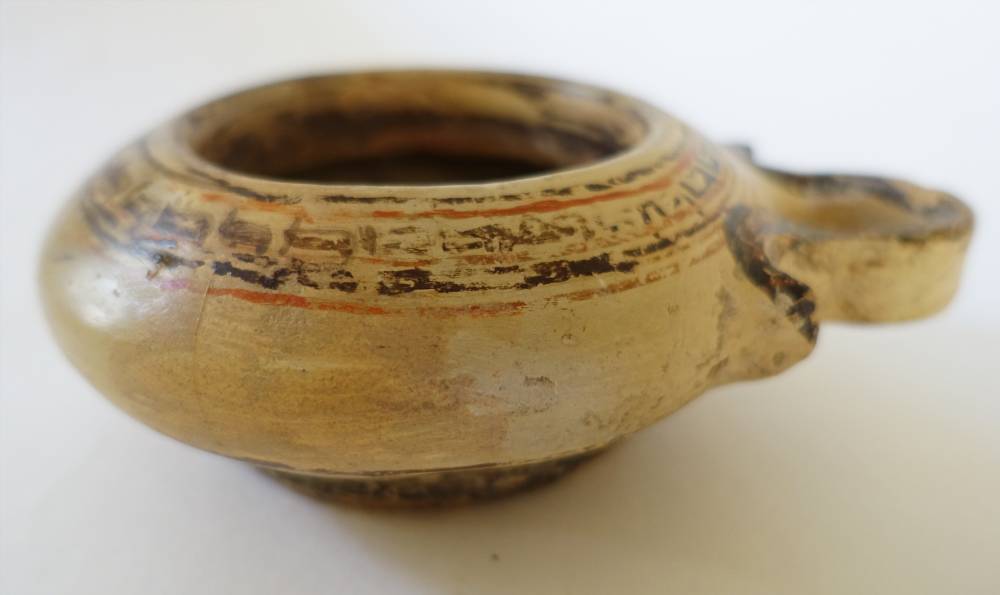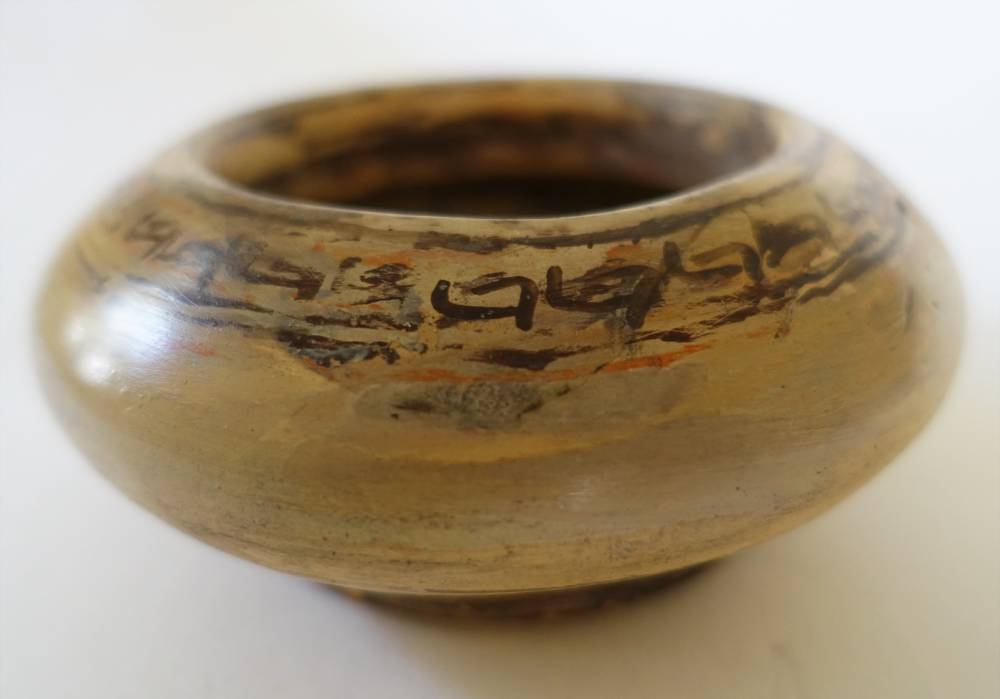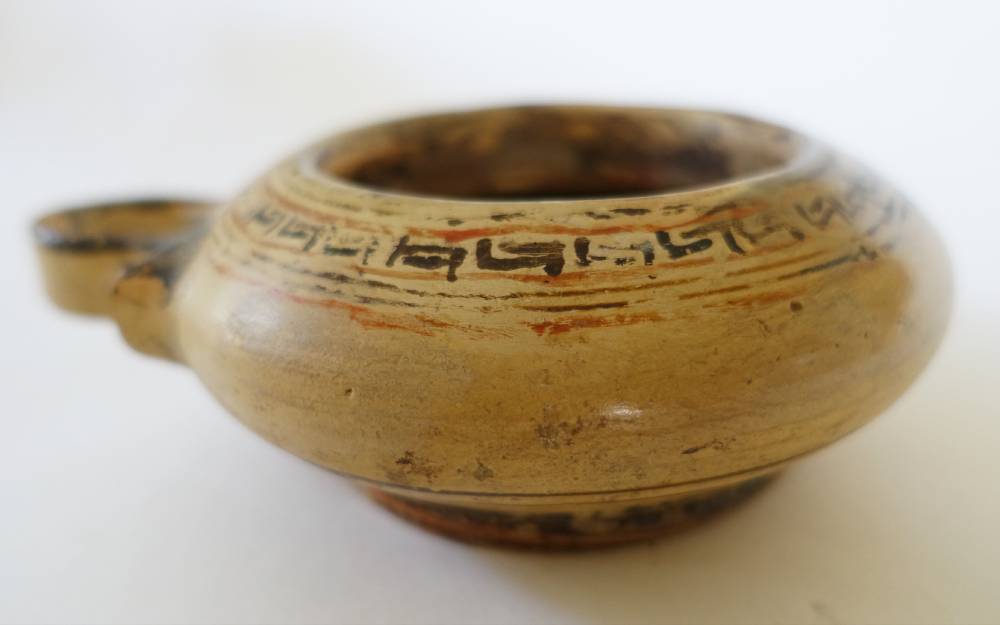Description
CORINTHIAN KOTHON Round body, flaring foot, horizontal strap handle.
Concentric bands on the folded lip. On the shoulder, band of slashes.
On the underside of the base, concentric bands in brown.
2nd half of the 6th century B.C.
Max diam: 17 cms
For a similar example see the Met Museum Collection
The kothon–also known as a plemochoe or exaleiptron– was designed to prevent
its contents from spilling. It was produced in Corinth through the 6th and 5th Centuries
B.C., and was widely exported. Find contexts on the site of Corinth indicate that the
shape was not common in burials but rather in temple dedications.



